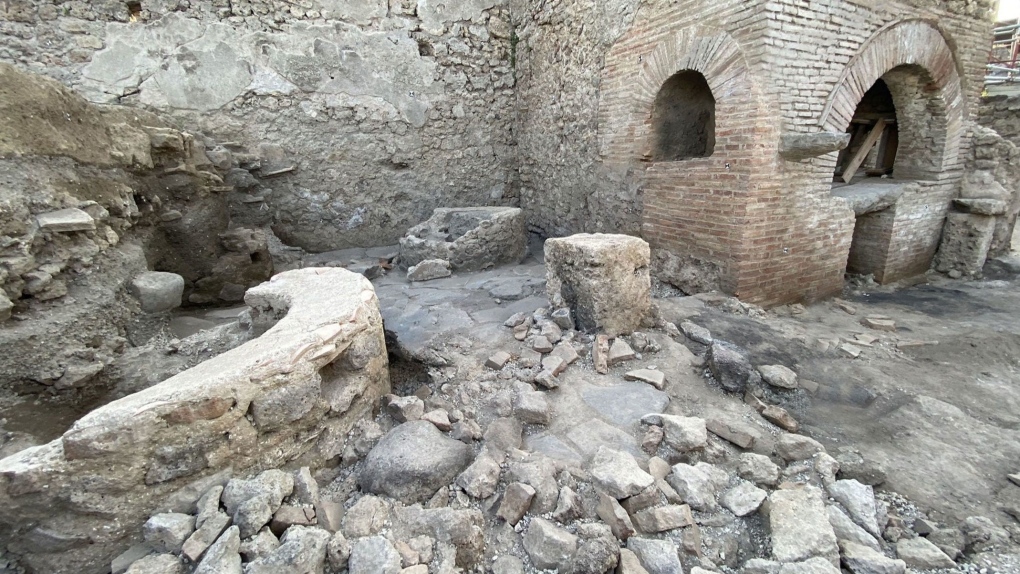ROME –
An ancient bakery operated by slaves has been discovered in the ruins of Pompeii, the Pompeii Archaeological Park said in a statement released Friday.
Enslaved people and donkeys were locked up together and used to power a mill to grind grain for bread, according to details of the discovery provided by the park.
The site consists of a narrow room with no external view but only small, high windows covered by bars through which minimal light passed. There were also indentations in the floor “to coordinate the movement of the animals, forced to walk around for hours, blindfolded,” the statement said.
The discovery was made in the Regio IX section of the popular tourist site, which is also an ongoing archaeological dig. The area is currently being excavated as part of a larger project designed to secure and maintain previously excavated areas of the Roman city.
Archaeologists discovered the bakery while excavating an ancient Pompeiian home that was being renovated when Mount Vesuvius erupted in 79 C.E., covering the city of Pompeii with ash.
The bodies of three victims of the eruption were found in recent months, believed to be residents of the home rather than slaves. The house was divided into a residential section with “refined frescoes” on one side, and a commercial bakery on the other.
Next to the bakery was the dimly lit prison area, Pompeii Archaeological Park director Gabriel Zuchtriegel said in an interview posted on the site’s YouTube channel.
“What has emerged is testimony of the backbreaking work to which men, women, and animals were subjected in the ancient mill-bakeries,” he added.
Zuchtriegel said these prison bakeries were previously described by the Roman writer Apuleius in the 2nd century C.E., in his novel “Metamorphoses” (also known as “The Golden Ass”), in which the protagonist, Lucius, “transformed into a donkey and was sold to a miller.” Zuchtriegel said the episode was based on the writer’s direct knowledge of the animals and humans living and working together.
The newly discovered prison area had no doors to the outside, only to the inner atrium.
“It is, in other words, a space in which we must imagine the presence of people of servile status whose owner felt the need to limit the freedom of movement,” Zuchtriegel said.
“It is the most shocking side of ancient slavery, the side devoid of relationships of trust, where it was reduced to brute violence, an impression which is fully confirmed by the closing of the few windows with iron grates.”
Archaeologists also believe that the indentations in the slab flooring were not made by repetitive movement but were carved to prevent the donkeys and other animals from slipping on the pavement and to force them to only walk in a circular motion to grind the grain, almost like a clockwork mechanism.
“The iconographic and literary sources, in particular the reliefs from the tomb of Eurysaces in Rome, suggest that a millstone was normally moved by a couple made up of a donkey and a slave,” Zuchtriegel said.
“The latter, in addition to pushing the grindstone, had the task of encouraging the animal and monitoring the grinding process, adding grain and removing flour.”
The site will complement an exhibition that opens December 15, called “The Other Pompeii: common lives in the shadow of Vesuvius,” which is dedicated to what Zuchtriegel calls the “myriad of individuals often forgotten by historical chronicles, such as the slaves, who constituted the majority of the population and whose work contributed significantly to the economy, but also to the culture and social fabric of Roman civilization.”


